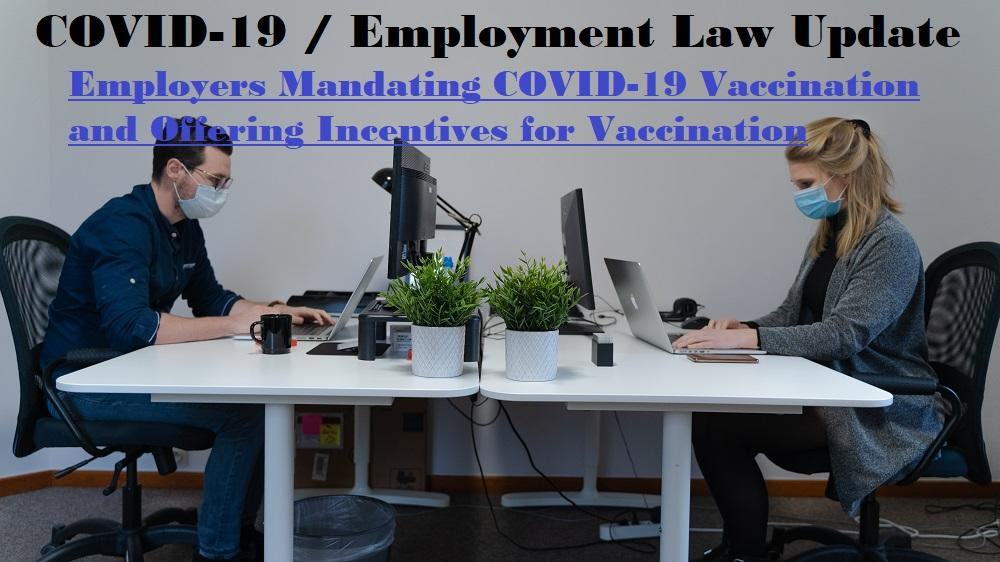Employers Mandating COVID-19 Vaccination and Offering Incentives for Vaccination
Last month, the federal Equal Employment Opportunity Commission (EEOC) updated its guidelines relating to COVID-19 vaccines.
The guidelines state that the federal equal employment opportunity (EEO) laws permit employers to refuse to allow employees to enter the workplace without a vaccine and to offer incentives to employees who voluntary provide evidence of vaccination.
Such programs must be applied so that employers are not treating employees differently based on disability, race, color, religion, sex (including pregnancy, sexual orientation and gender identity), national origin, age, or genetic information, unless there is a legitimate non-discriminatory reason.
Absent special circumstances (including the accommodations discussed below), under the EEO laws, employers can fire employees who choose not to be vaccinated against COVID-19.
In some circumstances, employers must provide reasonable accommodations for employees who, because of a disability or a sincerely held religious belief, practice, or observance, do not get vaccinated for COVID-19, unless providing an accommodation would pose an undue hardship on the operation of the employer’s business.
The analysis for undue hardship depends on whether the accommodation is for a disability (including pregnancy-related conditions that constitute a disability) or for a religious reason.
Some possible accommodations mentioned by the EEOC include having an unvaccinated employee wear a face mask, work at a social distance from others, work a modified shift, be periodically tested for COVID-19, work remotely, or accept a reassignment.
OSHA Guidelines
While the Occupational Safety and Health Administration (OSHA) has issued an Emergency Temporary Standard applicable only to the healthcare industry, other employers should follow OSHA’s June 10, 2021 guidance, Protecting Workers: Guidance on Mitigating and Preventing the Spread of COVID-19 in the Workplace, which replaces the guidance issued on January 29, 2021.
Because last month’s CDC guidance states that “fully vaccinated people can resume activities without wearing a mask or physically distancing” in most locations, OSHA now says that most employers no longer need to take steps to protect their fully vaccinated workers who are not otherwise at-risk from COVID-19 exposure.
As a result, the updated guidance “focuses only on protecting unvaccinated or otherwise at-risk workers in their workplaces (or well-defined portions of workplaces).”
The guidance describes a number of possible ways to protect unvaccinated or otherwise at-risk workers, including providing these workers with face coverings, requesting unvaccinated customers and visitors to wear face coverings, physically distancing these workers from others, limiting the number of unvaccinated/at-risk workers in any one place at any given time, and using solid barriers to separate those who cannot be socially distanced.
OSHA Recording Obligations Revised
Earlier this year, OSHA issued guidance stating that an adverse reaction to the COVID-19 vaccine must be recorded by employers in certain circumstances, but last month it revised its guidance to provide that OSHA will not require employers to record worker side effects from COVID-19 vaccination through May 2022.
*******
Whether you’re an employee or an employer, and whether you’re in Oregon or another state, please feel free to contact us if you have any questions about employment law.
For more information about employment law, see Employment Law (in Plain English)®, co-authored by members of this law firm. The book is available through Skyhorse Publishing, Amazon, Barnes & Noble, Powell’s Books, and Bookshop (an online bookstore that allows you to support your favorite independently owned bookstore).
Photo by Maxime on Unsplash






